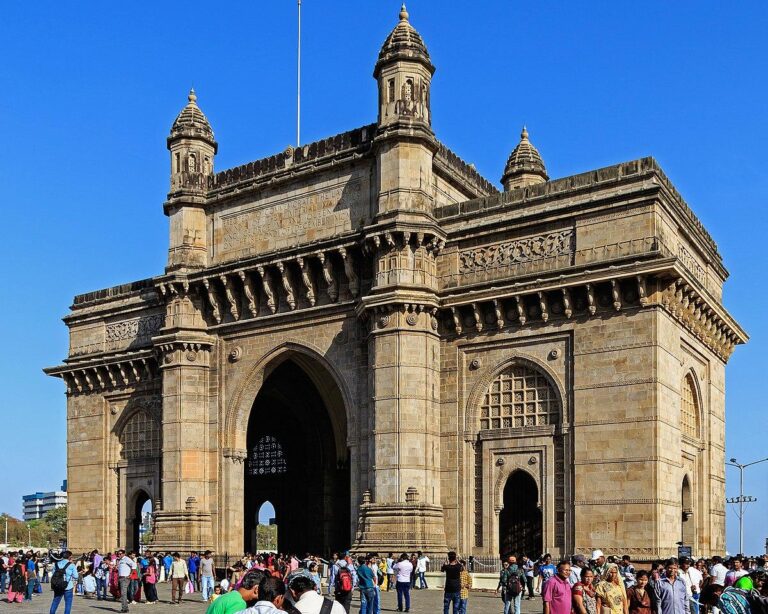India Poised for a Landmark Trade Agreement with the United States
In a meaningful progress in global trade relations,U.S. Treasury Secretary Scott Bessent has revealed that India is on the cusp of becoming the first country to finalize an extensive trade agreement with the United States. During a recent press conference, Bessent characterized the ongoing discussions as “very close,” underscoring both nations’ dedication to strengthening economic ties. If this agreement is finalized,it could represent a transformative moment in U.S.-India relations, positioning India as an essential player in america’s broader trade strategy within Asia.
A Historic Trade Agreement on the Horizon
As India prepares to potentially seal a groundbreaking trade deal with the United States, excitement is palpable across both countries.Secretary Bessent noted that negotiations are advancing at an extraordinary pace,suggesting that india may soon become the first nation to enter into such a comprehensive pact with Washington. This agreement aims not only to boost bilateral commerce—which has already been experiencing growth—but also to open new markets for Indian businesses while granting American firms greater access to India’s expanding consumer market.
The anticipated trade deal carries considerable implications across various sectors and promises reciprocal benefits that could redefine economic interactions between these two nations.Key focal points of negotiation include:
- Reduction of Tariffs: Aiming for lower tariffs on goods, especially in agriculture and manufacturing sectors.
- Investment Incentives: Promoting U.S. investments in Indian infrastructure and technology initiatives.
- Protection of Intellectual Property Rights: Enhancing protections designed to stimulate innovation.
Both parties are hopeful that reaching an agreement swiftly will facilitate deeper collaboration, emphasizing how crucial U.S.-India relations are within today’s shifting global economy. A prosperous trade pact could act as a catalyst for establishing a comprehensive economic framework beneficial not just for both countries but also influential over regional trading patterns.
Economic Advantages of the Proposed India-U.S. Trade Agreement
The prospective trade pact between India and America offers numerous economic benefits capable of significantly enhancing each nation’s standing in international markets. By lowering tariffs and streamlining trading processes, businesses from both sides can expect improved market access alongside reduced operational expenses—encouraging increased foreign direct investment and fostering conditions conducive to innovation and expansion.Main advantages include:
- Doubled Bilateral Trade Volume: The goal is to double current trading figures,creating vast opportunities for exporters and importers alike.
- Create New Jobs: with expanded market access comes potential job creation across various industries which may help alleviate unemployment rates.
- simplified Supply Chains: More efficient regulations will enhance supply chain management benefiting manufacturers and suppliers collectively.
This partnership also stands poised to fortify strategic economic connections between nations while solidifying America’s role as an indispensable ally within the Indo-Pacific region. Through collaborative efforts focused on shared objectives like technology transfer and sustainable practices,
Possible long-term outcomes include:
- A Boosted Competitive Edge: The adaptation by companies under this new trading framework should enhance their competitiveness globally.
- User Benefits: Lesser tariffs might lead consumers toward lower prices thereby increasing their purchasing power significantly.
- An Innovation Surge: A focus on technology exchange may catalyze advancements notably within renewable energy sectors or digital services domains.
Strategic Approaches for Strengthening Bilateral Trade Relations
Aiming at reinforcing bilateral commercial ties between india and America necessitates several strategic approaches.Firstly,
enhancing cooperation within technological fields can lay down robust foundations leading towards increased commerce initiatives.Investment into innovation partnerships focusing on data technology,bioengineering,and green energy can yield mutual gains.Additionally,fosteringeducational collaborations among institutions from both countries might cultivate skilled workforces tailored specifically towards emerging industry demands.
An equally important pathway involvesdismantling existing barriers through negotiating favorable tariffs along with regulations.Both nations must establish clear frameworks governing these agreements thus improving market accessibility while protecting vital domestic industries.Moreover,< regular bilateral forums< should be organized regularly encouraging dialog among policymakers,business leaders,and industry experts aimed at identifying growth areas along with collaboration prospects.These initiatives could pave pathways toward more resilient economic partnerships aligning closely with Scott Bessent’s vision regarding closer commercial ties between these two powers.
Conclusion
The potential trade agreement being negotiated between India & The United States—as emphasized by US Treasury Secretary Scott Bessent—represents significant progress towards deepening financial connections amongst them.as talks advance & optimism grows surrounding finalizing terms,the ramifications extend far beyond mere economics impacting global commerce & regional dynamics profoundly.Should this accord materialize,it holds promise not only for heightened investments but also job creation alongside enhanced trading opportunities further solidifying India’s stature globally.Stakeholders from either side remain vigilant observing developments closely over upcoming weeks as they approach what could become one historic commercial arrangement.




